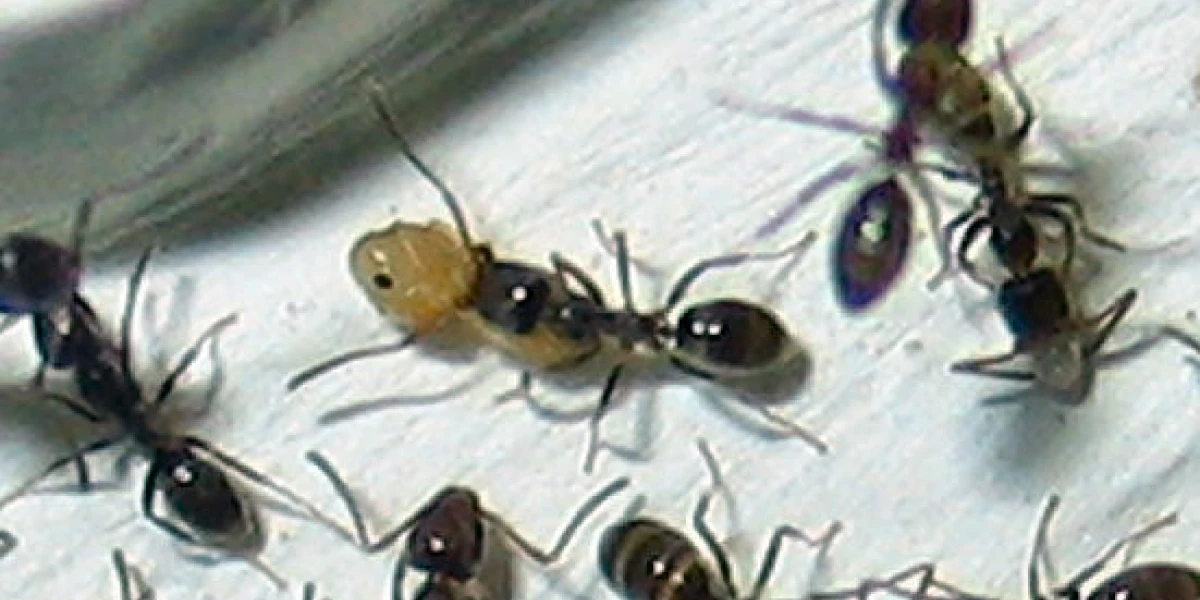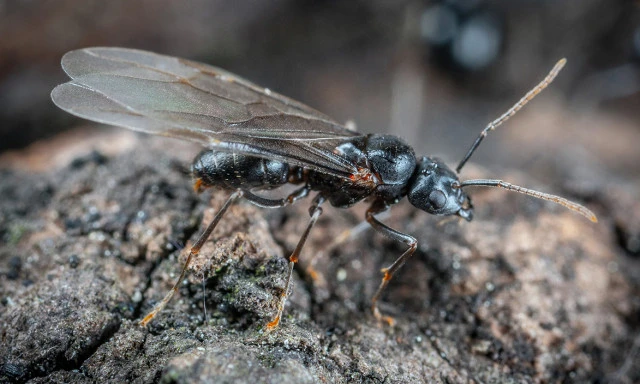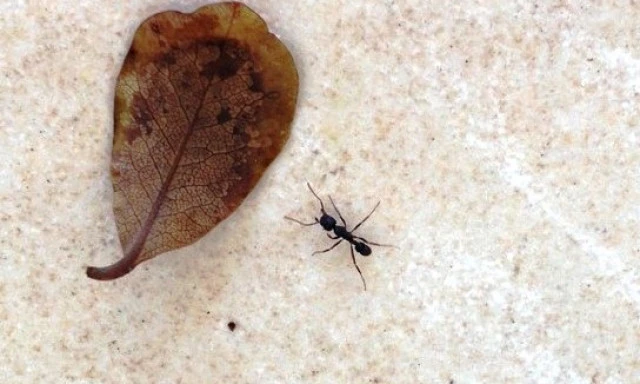NZ Ants
There are about 40 species of ant found in New Zealand. This compares to Australia where there are about 15,000 species. Of the species found in New Zealand, only 11 are endemic (native to New Zealand) and 29 are introduced (accidentally brought to New Zealand), most of them from Australia.
Ants are classified with bees, wasps and ichneumons in the order Hymenoptera. Like many bees and wasps, they form colonies and behave as social insects. Typically, an ant colony is composed of one or more wingless queens and many workers (wingless females). Winged queens and males are only produced in the reproductive stage when they fly from the nest, mate on the wing and then the males die, while the mated queens fly off to find a new nest site where they lose their wings and start laying eggs, which they care for. Not all species have this nuptial flight; some do not have winged forms and disperse on the ground. The first brood of eggs develop into the first workers and they then take over the care of further eggs and larvae from the queen while the queen’s job is now just to lay eggs.
Ant nests are galleries within the ground or structures such as rotting logs or, sometimes, buildings. Preferred sites tend to be dry, warm locations such as under pavers on the north side of a house.
The colony’s behaviour is regulated by pheromones (chemical odours produced in the colony that trigger particular behaviour). These odours include alarm signals and the trail left by workers showing a path to a food source. The colony will also have its own odour by which the members of the colony identify members and can distinguish ants from other colonies. Ants have poor eyesight and they live largely in a chemical world communicating with chemical signals and detecting their environment from chemical cues.
It is thought that because some of the introduced species were brought in as one colony, that all the progeny of that colony, and the colonies that have spread from the initial infestation, are genetically closely related so that all the individual in the nests recognise each other as of the same colony. And instead of competing, as they might in their native land, cooperate, and are consequently highly successful in competing with other ant species and become more numerous.
The queen/s usually remain in the nest along with most of the workers. A small proportion of the colony, normally the older workers, are sent out to search for and collect food. Scout workers search for food and when suitable food is found they return to the nest, laying an odour trail. The trail acts as a pheromone indicating to other foraging workers to follow it to the food. The food is then returned to the nest and fed on to other workers, larvae and queens. Therefore, ant baits are effective in controlling the nests, even if the nest site is not located.
Pest species in New Zealand are almost all introduced. These include Argentine ants, Darwin's ants, and white footed ants. However, on occasions, other ant species can become a pest when they enter buildings and there are many ant species that could be introduced to New Zealand that it is thought could become a major pest if they were to become established.
List of ant species in New Zealand
Species | Introduced/Endemic | Common name | Pest | Distribution |
Amblyopone australis | Introduced | Southern Michelin ant |
|
|
Amblyopone saundersi | Endemic | New Zealand Michelin ant |
|
|
Doleromyrma darwiniana | Introduced | Yes | Christchurch, Nelson, Marlborough, NI | |
Iridomyrmex undescribed | Introduced | Flat-backed tyrant ants | Yes | NI, Nelson |
Linepithema humile | Introduced | Yes | Christchurch, Nelson, Marlborough, NI | |
Ochetellus glaber | Introduced | Black house ant | Nuisance |
|
Technomyrmex jocosus | Introduced | Yes | NI, SI as far south as Dunedin | |
Rhytidoponera chalybaea | Introduced | Blue pony ants | Can sting |
|
Rhytidoponera metallica | Introduced | Metallic pony ants | Can sting |
|
Nylanderia spp | Introduced | Parrot ants |
|
|
Plagiolepis alluaudi | Introduced | Little yellow ant |
|
|
Prolasius advenus | Endemic | Small brown bush ant |
|
|
Heteroponera brouni | Endemic | Crypt ants |
|
|
Cardiocondyla minutior | Introduced | None |
|
|
Huberia brounii | Endemic | None |
|
|
Huberia striata | Endemic | Striated ant |
|
|
Mayriella abstinens | Introduced | None |
|
|
Monomorium antarcticum | Endemic | Southern ant | Yes | All |
Monomorium antipodum | Endemic | Tiny brown ant | Yes | NI, Nelson |
Monomorium floricola | Introduced | Bicoloured trailing ant |
|
|
Monomorium pharaonis | Introduced | Pharaoh ant | Yes | NI, Christchurch |
Monomorium smithii | Endemic | None |
|
|
Monomorium sydneyense | Introduced | None reported |
|
|
Orectognathus antennatus | Introduced | Goblin ants |
|
|
Pheidole megacephala | Introduced | Big-headed ant. Also known as brown house-ant, coastal brown-ant, lion ant, African Big-headed ant | Yes | Auckland |
Pheidole proxima | Introduced | Big-headed ant |
|
|
Pheidole rugosula | Introduced | Big-headed ant | Yes | NI, Nelson, Christchurch |
Pheidole vigilans | Introduced | Big-headed ant |
|
|
Solenopsis undescribed | Introduced | Thief ants |
|
|
Strumigenys perplexa | Introduced | Snappy detritus ants |
|
|
Strumigenys xenos | Introduced | Snappy detritus ants |
|
|
Tetramorium bicarinatum | Introduced | Pennant ants | Nuisance |
|
Tetramorium grassii | Introduced | Pennant ants | Nuisance | Northern NI |
Hypoponera confinis | Introduced | Crypt ant |
|
|
Hypoponera eduardi | Introduced | Crypt ants |
|
|
Hypoponera punctatissima | Introduced | Roger’s ant, Tropical stinging ant |
|
|
Pachycondyla castanea | Endemic | None | Can sting |
|
Pachycondyla castaneicolor | Endemic | None | Can sting |
|
Ponera leae | Introduced | Blind crypt ants |
|
|
Discothyrea antarctica | Endemic | Clubbed trigger ant |
|
|
Campontus sp. | Introduced | Can bite | NI, Christchurch |
David Brittain
Kiwicare


